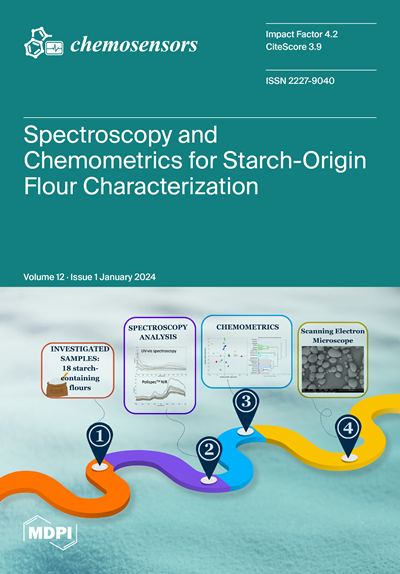Electrochemical Sensing of Vitamin D3: A Comparative Use of Glassy Carbon and Unmodified Screen-Printed Carbon Electrodes
IF 3.7
3区 工程技术
Q2 CHEMISTRY, ANALYTICAL
引用次数: 0
Abstract
This work presents the electrochemical determination of cholecalciferol (Vitamin D3) in water-organic mixtures using a glassy carbon electrode (GCE) and commercial screen-printed carbon electrodes (SPCEs). The electrocatalytic behavior of Vitamin D3 on the surface of the working electrode produced a well-defined oxidation peak at +0.95 V (vs. Ag|AgCl, 3.0 mol L−1) and +0.7 V (vs. Ag-SPCE pseudo-reference electrode) for the GCE and SPCE, respectively, in 0.1 M LiClO4 prepared in 50% ethanol. The nature of the organic solvent needed for the solubilization of Vitamin D3 was evaluated, together with the concentration of the supporting electrolyte, the ratio of the water-organic mixture, the voltametric parameters for the cyclic voltammetry (CV), and square-wave voltammetry (SWV) analyses. Under the optimized conditions, a linear correlation between the anodic peak current and the concentration of Vitamin D3 was obtained over the range of 0.47 to 123 µmol L−1 and 59.4 to 1651 µmol L−1 for the GCE and SPCE, respectively. The determined limits of detection (LOD) were 0.17 (GCE) and 19.4 µmol L−1 (SPCE). The methodology was successfully applied to commercial supplement tablets of Vitamin D3. Additionally, this work shows the possibility of using non-modified GCE and SPCE for routine analysis of Vitamin D3.维生素 D3 的电化学传感:玻璃碳电极与未改性丝网印刷碳电极的比较使用
本文介绍了利用玻璃碳电极(GCE)和商业丝网印刷碳电极(SPCEs)电化学测定水-有机混合物中胆钙化醇(维生素D3)的方法。在50%乙醇中制备的0.1 M LiClO4中,维生素D3在工作电极表面的电催化行为产生了明确的氧化峰,分别为+0.95 V (vs. Ag|AgCl, 3.0 mol L−1)和+0.7 V (vs. Ag-SPCE伪参比电极)。考察了维生素D3增溶所需的有机溶剂的性质,以及支持电解质的浓度、水-有机混合物的比例、循环伏安法(CV)和方波伏安法(SWV)分析的伏安参数。在优化条件下,GCE和SPCE的阳极峰电流与维生素D3浓度分别在0.47 ~ 123µmol L−1和59.4 ~ 1651µmol L−1范围内呈线性相关。测定的检出限(LOD)分别为0.17 (GCE)和19.4µmol L−1 (SPCE)。该方法已成功地应用于商业维生素D3补充剂片。此外,这项工作显示了使用未修饰的GCE和SPCE进行维生素D3常规分析的可能性。
本文章由计算机程序翻译,如有差异,请以英文原文为准。
求助全文
约1分钟内获得全文
求助全文
来源期刊

Chemosensors
Chemistry-Analytical Chemistry
CiteScore
5.00
自引率
9.50%
发文量
450
审稿时长
11 weeks
期刊介绍:
Chemosensors (ISSN 2227-9040; CODEN: CHEMO9) is an international, scientific, open access journal on the science and technology of chemical sensors published quarterly online by MDPI.The journal is indexed in Scopus, SCIE (Web of Science), CAPlus / SciFinder, Inspec, Engineering Village and other databases.
 求助内容:
求助内容: 应助结果提醒方式:
应助结果提醒方式:


